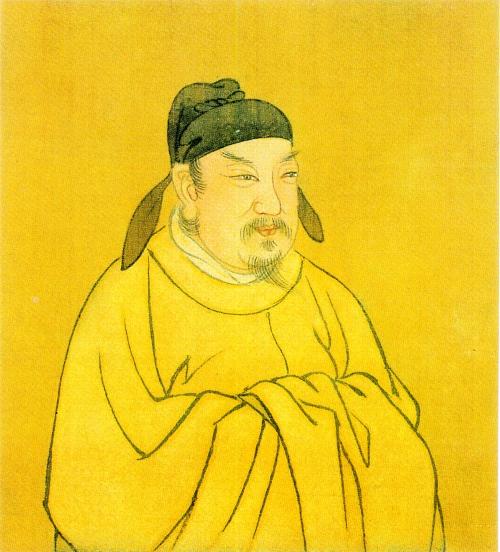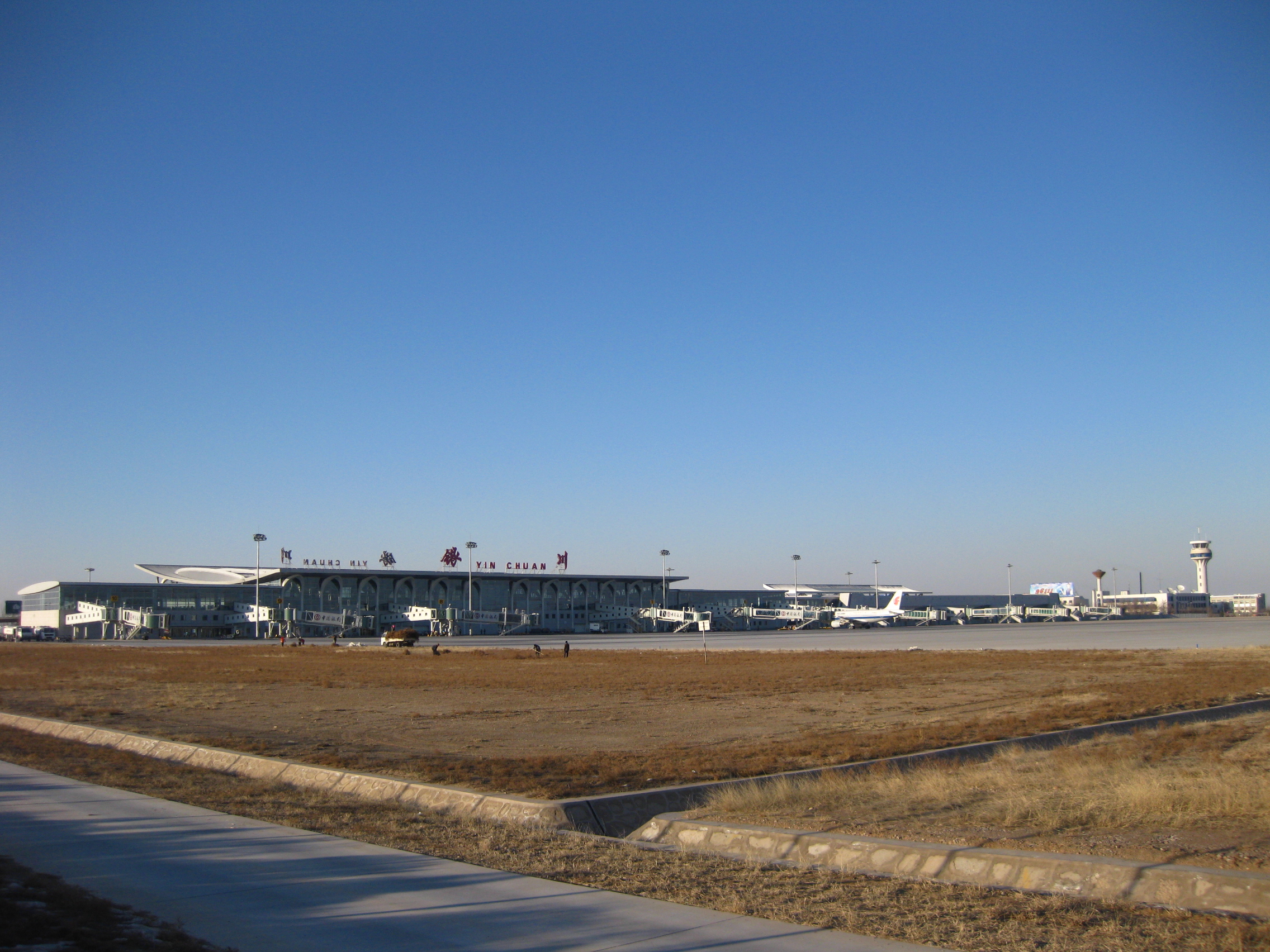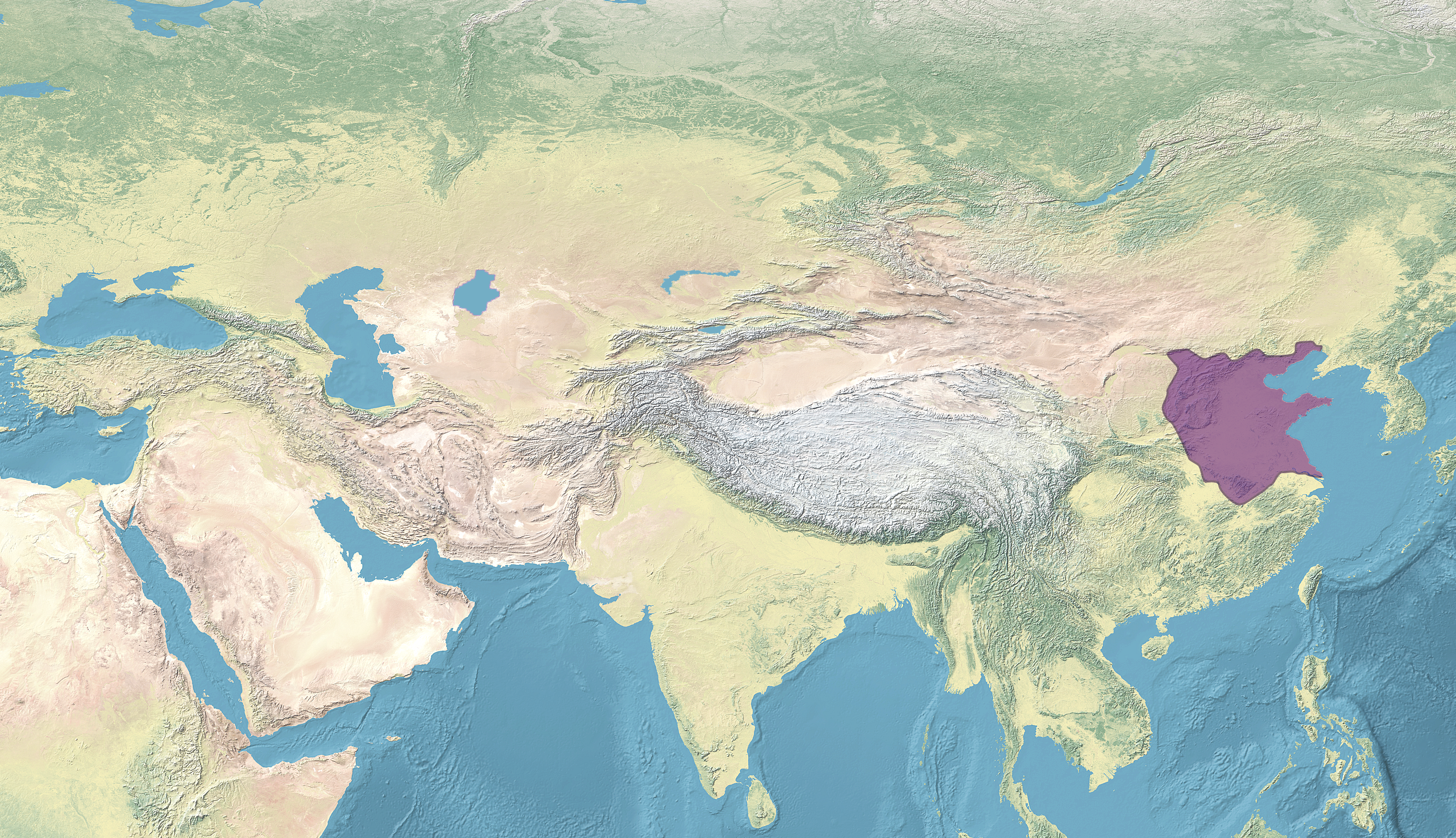|
Emperor Gong Of Western Wei
Emperor Gong of Western Wei ((西)魏恭帝) (537? – April 557Volume 167 of ''Zizhi Tongjian'' indicated that Emperor Gong was killed between the ''jiawu'' day of the 2nd month and the ''gengzi'' day of the 3rd month of the 1st year of the ''Yongding'' era of Chen Baxian's reign; the dates corresponds to 9 and 15 Apr 557 in the Julian calendar.), personal name né Yuan Kuo (元廓), later changed to Tuoba Kuo (拓拔廓), was the last emperor of the Western Wei dynasty of China. He was made emperor in March 554 after his older half-brother Yuan Qin was deposed by the paramount general Yuwen Tai. He carried little actual power, and in 556, after Yuwen Tai's death, Yuwen Tai's nephew Yuwen Hu, serving as guardian to Yuwen Tai's son Yuwen Jue (Emperor Xiaomin of Northern Zhou), forced Emperor Gong to yield the throne to Yuwen Jue, ending Western Wei and founding the Northern Zhou dynasty. The former emperor was killed in 557. Background Yuan Kuo was born in 537, as the fourth son ... [...More Info...] [...Related Items...] OR: [Wikipedia] [Google] [Baidu] |
Western Wei
Wei (), known in historiography as the Western Wei (), was an imperial dynasty of China that followed the disintegration of the Northern Wei. One of the Northern dynasties during the era of the Northern and Southern dynasties, it ruled the western part of northern China from 535 to 557. As with the Northern Wei dynasty that preceded it, the ruling family of the Western Wei were members of the Tuoba clan of the Xianbei. History After the Xianbei general Yuwen Tai killed the Northern Wei emperor Yuan Xiu, he installed Yuan Baoju as emperor of Western Wei while Yuwen Tai would remain as the virtual ruler. Although smaller than the Eastern Wei in territory and population, Western Wei was able to withstand the attacks from the eastern empire, most notably at the Battle of Shayuan in 537. Due to its better economical conditions, Western Wei was even able to conquer the whole western part of the Liang empire in the south and occupied the territory of modern Sichuan. In 557 Yuwen Ta ... [...More Info...] [...Related Items...] OR: [Wikipedia] [Google] [Baidu] |
Hubei
Hubei is a province of China, province in Central China. It has the List of Chinese provincial-level divisions by GDP, seventh-largest economy among Chinese provinces, the second-largest within Central China, and the third-largest among inland provinces. Its provincial capital at Wuhan serves as a major political, cultural, and economic hub for the region. Hubei is associated with the historical state of E that existed during the Western Zhou dynasty (771 BCE). Its name means 'north of the lake', referring to Dongting Lake. It borders Henan to the north, Anhui and Jiangxi to the east, Hunan to the south, and Chongqing and Shaanxi to the west. The high-profile Three Gorges Dam is located at Yichang in the west of the province. History The Hubei region was home to sophisticated Neolithic cultures. By the Spring and Autumn period (770–476 BC), the territory of today's Hubei formed part of the powerful Chu (state), State of Chu. Chu, nominally a tributary state of the Zh ... [...More Info...] [...Related Items...] OR: [Wikipedia] [Google] [Baidu] |
Northern Wei Emperors
Northern may refer to the following: Geography * North, a point in direction * Northern Europe, the northern part or region of Europe * Northern Highland, a region of Wisconsin, United States * Northern Province, Sri Lanka * Northern Range, a range of hills in Trinidad * Northern State (Sudan), one of the 18 wilayat (states) of Sudan Schools * Northern Collegiate Institute and Vocational School (NCIVS), a school in Sarnia, Canada * Northern Secondary School, Toronto, Canada * Northern Secondary School (Sturgeon Falls), Ontario, Canada * Northern University (other), various institutions * Northern Guilford High School, a public high school in Greensboro, North Carolina Companies * Arriva Rail North, a former train operating company in northern England * Chemins de fer du Nord (Northern Railway Company), a former rail transport company in northern France * Nord-Aviation (Northern Aviation), a former state-owned French aircraft manufacturer. * Compañía de los Caminos de ... [...More Info...] [...Related Items...] OR: [Wikipedia] [Google] [Baidu] |
6th-century Murdered Monarchs
The 6th century is the period from 501 through 600 in line with the Julian calendar. In the West, the century marks the end of Classical Antiquity and the beginning of the Middle Ages. The collapse of the Western Roman Empire late in the previous century left Europe fractured into many small Germanic kingdoms competing fiercely for land and wealth. From the upheaval the Franks rose to prominence and carved out a sizeable domain covering much of modern France and Germany. Meanwhile, the surviving Eastern Roman Empire began to expand under Emperor Justinian, who recaptured North Africa from the Vandals and attempted fully to recover Italy as well, in the hope of reinstating Roman control over the lands once ruled by the Western Roman Empire. Owing in part to the collapse of the Roman Empire along with its literature and civilization, the sixth century is generally considered to be the least known about in the Dark Ages. In its second golden age, the Sassanid Empire reached the ... [...More Info...] [...Related Items...] OR: [Wikipedia] [Google] [Baidu] |
557 Deaths
__NOTOC__ Year 557 ( DLVII) was a common year starting on Monday of the Julian calendar. The denomination 557 for this year has been used since the early medieval period, when the Anno Domini calendar era became the prevalent method in Europe for naming years. Events By place Europe * The Avars arrive in the northern region of the Caucasus, between the Black Sea and the Caspian Sea. They send envoys to the Byzantines in Lazica (modern Georgia). Like the Huns, the Avars are the former elite of a central Asian federation, which has been forced to flee westwards. Byzantine Empire * December 14 – The 557 Constantinople earthquake occurs. Asia * The Western Wei Dynasty ends: Yuwen Hu deposes emperor Gong Di, and places Yuwen Tai's son Xiaomin on the throne. Yuwen Hu becomes regent and establishes the Northern Zhou dynasty in China. * Ming Di is made emperor, after his younger brother Xiao Min Di is arrested while trying to assume power. Xiao Min Di is depo ... [...More Info...] [...Related Items...] OR: [Wikipedia] [Google] [Baidu] |
530s Births
53 may refer to: * 53 (number) * one of the years 53 BC, AD 53, 1953, 2053 * FiftyThree, an American privately held technology company that specializes in tools for mobile creation and visual thinking * 53rd Regiment Alabama Cavalry * 53rd Regiment of Foot (other) * 53rd Division (other) * ''53'' (Jacky Terrasson album), 2019 * "Fifty Three", a song by Karma to Burn from the album ''Arch Stanton'', 2014 * Fifth Third Bank Fifth Third Bancorp is a bank holding company headquartered in Cincinnati, Ohio. It is the parent company of Fifth Third Bank (5/3 Bank), which operates 1,100 branches and 2,400 automated teller machines, which are located in 11 states: Oh ... * 53 Kalypso, a main-belt asteroid {{Numberdis ... [...More Info...] [...Related Items...] OR: [Wikipedia] [Google] [Baidu] |
Emperor Of Northern Wei
Wei (), known in historiography as the Northern Wei ( zh, c=北魏, p=Běi Wèi), Tuoba Wei ( zh, c=拓跋魏, p=Tuòbá Wèi), Yuan Wei ( zh, c=元魏, p=Yuán Wèi) and Later Wei ( zh, t=後魏, p=Hòu Wèi), was an imperial dynasty of China ruled by the Tuoba (Tabgach) clan of the Xianbei. The first of the Northern dynasties, it ruled northern China from 386 to 535 during the period of the Northern and Southern dynasties. Described as "part of an era of political turbulence and intense social and cultural change", the Northern Wei dynasty is particularly noted for unifying northern China in 439, bringing an end to the chaotic Sixteen Kingdoms period, and strengthening imperial control over the rural landscape via reforms in 485. This was also a period of introduced foreign ideas, such as Buddhism, which became firmly established. The Northern Wei was referred to as "Plaited Barbarians" (索虜; ''suǒlǔ'') by writers of the Southern dynasties, who considered themselves the ... [...More Info...] [...Related Items...] OR: [Wikipedia] [Google] [Baidu] |
Ningxia
Ningxia, officially the Ningxia Hui Autonomous Region, is an autonomous region in Northwestern China. Formerly a province, Ningxia was incorporated into Gansu in 1954 but was later separated from Gansu in 1958 and reconstituted as an autonomous region for the Hui people, one of the 56 officially recognised nationalities of China. Twenty percent of China's Hui population lives in Ningxia. Ningxia is bounded by Shaanxi to the east, Gansu to the south and west and Inner Mongolia Autonomous Region to the north and has an area of around . This sparsely settled, mostly desert region lies partially on the Loess Plateau and in the vast plain of the Yellow River and features the Great Wall of China along its northeastern boundary. Over about 2000 years, an extensive system of canals (with a total length of approximately 1397 kilometers) has been built from Qin dynasty. Extensive land reclamation and irrigation projects have made increased cultivation possible. The arid region of Xihaig ... [...More Info...] [...Related Items...] OR: [Wikipedia] [Google] [Baidu] |
Guyuan
Guyuan ( zh, c=固原, p=Gùyuán ), formerly known as Xihaigu ( zh, links= , c=西海固, p=xīhǎigù, Xiao'erjing: قُيُوًا شِ) or Dayuan (), is a prefecture-level city in the Ningxia Hui Autonomous Region of the People's Republic of China. It occupies the southernmost section of the region, bordering Gansu province to the east, south, and due west. This is also the site of Mount Sumeru Grottoes (), which is among the ten most famous grottoes in China. As of the end of 2018, the total resident population in Guyuan was 1,124,200. History Guyuan is the oldest city in Ningxia, being established in 114 BC as Gaoping, capital of Anding Commandery. It was a stop on the Northern Silk Road. During the Warring States Period, Guyuan belonged to the territory of Qin state, later Qin Dynasty. The original name of the city began in the Ming dynasty (1452 AD). Because of the importance of its transportation in history, Guyuan was a war gate where Chinese soldiers trained and ... [...More Info...] [...Related Items...] OR: [Wikipedia] [Google] [Baidu] |
Zhou Dynasty
The Zhou dynasty ( ) was a royal dynasty of China that existed for 789 years from until 256 BC, the longest span of any dynasty in Chinese history. During the Western Zhou period (771 BC), the royal house, surnamed Ji, had military control over territories centered on the Wei River valley and North China Plain. Even as Zhou suzerainty became increasingly ceremonial over the following Eastern Zhou period (771–256 BC), the political system created by the Zhou royal house survived in some form for several additional centuries. A date of 1046 BC for the Zhou's establishment is supported by the Xia–Shang–Zhou Chronology Project and David Pankenier, but David Nivison and Edward L. Shaughnessy date the establishment to 1045 BC. The latter Eastern Zhou period is itself roughly subdivided into two parts. During the Spring and Autumn period (), power became increasingly decentralized as the authority of the royal house diminished. The Warring States ... [...More Info...] [...Related Items...] OR: [Wikipedia] [Google] [Baidu] |
Western Liang (555–587)
Liang, known in historiography as the Western Liang () or the Later Liang (), was an imperial dynasty of China during the Northern and Southern dynasties era of Chinese history. Throughout its existence, it remained a puppet state of the Western Wei, Northern Zhou and Sui dynasties. The Western Liang dynasty was ruled by members of the same imperial clan as the Liang dynasty. It was located in the middle Yangtze region in today's central Hubei province. The Western Liang's founding emperor, Xiao Cha (Emperor Xuan), was a grandson of the Liang dynasty founder Emperor Wu of Liang. As a result, Western Liang is usually considered a rump state of the Liang dynasty after 557. From 555 to 557 the two states claiming the political orthodoxy of the Liang dynasty existed simultaneously: Xiao Cha ruled from Jiangling, while Xiao Yuanming and Xiao Fangzhi ruled from Jiankang. Before 555, Emperor Yuan of Liang also ruled from Jiangling before he was captured and executed by Xiao Cha ... [...More Info...] [...Related Items...] OR: [Wikipedia] [Google] [Baidu] |
Northern Qi
Qi, known as the Northern Qi (), Later Qi (後齊) or Gao Qi (高齊) in historiography, was a Dynasties in Chinese history, Chinese imperial dynasty and one of the Northern and Southern dynasties#Northern dynasties, Northern dynasties during the Northern and Southern dynasties era. It ruled the eastern part of northern China from 550 to 577. The dynasty was founded by Emperor Wenxuan of Northern Qi, Gao Yang (Emperor Wenxuan), and was eventually conquered by the Xianbei-led Northern Zhou, Northern Zhou dynasty in 577. History Northern Qi was the successor state of the Chinese Xianbei state of Eastern Wei and was founded by Emperor Wenxuan of Northern Qi, Emperor Wenxuan. Emperor Wenxuan had a Han Chinese, Han father of largely Xianbei culture, Gao Huan, and a Xianbei mother, Lou Zhaojun. As Eastern Wei's powerful minister Gao Huan was succeeded by his sons Gao Cheng and Gao Yang, who took the throne from Emperor Xiaojing of Eastern Wei in 550 and established Northern Qi as Emper ... [...More Info...] [...Related Items...] OR: [Wikipedia] [Google] [Baidu] |







